Exploring the Rich Tradition of Sotho Traditional Attire 2024
Exploring the Rich Tradition of Sotho Traditional Attire 2024
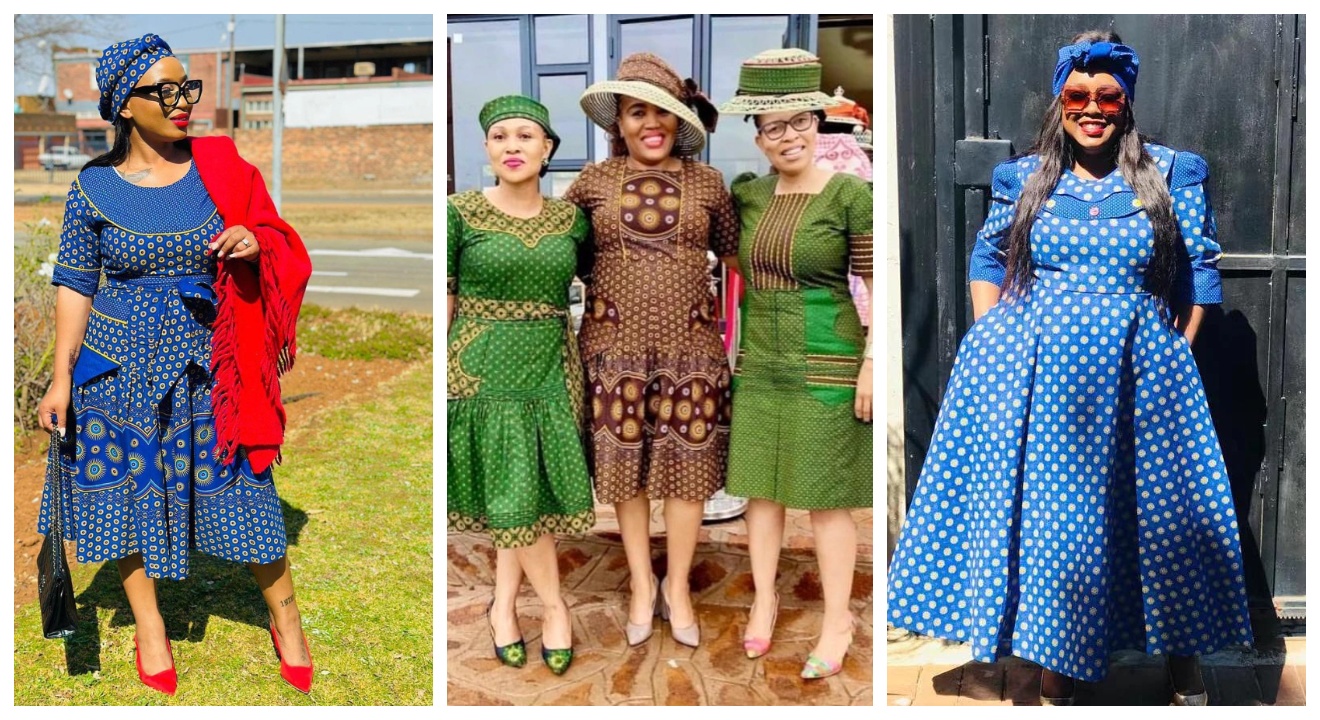
Introduction
Sotho Traditional Attire carries a rich cultural heritage that has been passed down through generations. This article will provide an overview of the attire and its significance to the Sotho people.
Overview of Sotho Traditional Attire and its significance
The Sotho Traditional Attire is known for its vibrant colors, intricate designs, and beautiful fabrics. It reflects the history, beliefs, and values of the Sotho people. The attire consists of various garments such as blankets, skirts, shirts, and accessories like beads and hats.
Each piece of the traditional attire holds symbolic meaning. For instance, the blanket, known as “Seanamarena,” is worn as a display of wealth, status, and pride. It tells a story of the wearer’s community and heritage. Colors and patterns on the attire also carry specific meanings, representing different stages of life, rituals, or clans within the Sotho culture.
Wearing Sotho Traditional Attire is not just about fashion; it is a way for the Sotho people to connect with their roots and celebrate their identity. It fosters a sense of belonging and unity among the community during important cultural events like weddings, initiations, or ceremonies.
Furthermore, the popularity of Sotho Traditional Attire has extended beyond cultural events. Many people from different backgrounds now appreciate its beauty and incorporate elements of it into modern fashion trends. This fusion of traditional and contemporary styles not only preserves the heritage but also promotes cultural diversity and cross-cultural understanding.
Exploring the rich tradition of Sotho Traditional Attire unveils a vivid tapestry of history and artistry. It serves as a reminder of the importance of embracing and cherishing one’s cultural identity while embracing the evolving world around us.


History of Sotho Traditional Attire
Origins and evolution of Sotho Traditional Attire
Sotho traditional attire represents the rich cultural heritage of the Basotho people of Southern Africa. The attire showcases the customs and traditions passed down from generation to generation. It is a blend of vibrant colors, intricate designs, and symbolic patterns that tell stories of the community’s history and beliefs.
The origins of Sotho traditional attire can be traced back to the early Bantu-speaking clans that inhabited the region. Over time, these clothing styles evolved, influenced by factors such as changing lifestyles and external cultural influences.
Women typically adorn themselves in colorful blankets called “Seanamarena,” which are intricately woven with geometric patterns. These blankets are not only practical but also serve as a symbol of pride and identity for the Basotho people.
Men wear a traditional outfit known as “Seshoeshoe,” which consists of a shirt and pants made from printed fabric. The patterns on the fabric often represent specific meanings or messages, such as fertility, wealth, or protection.
Today, Sotho traditional attire continues to be celebrated and worn during special occasions like weddings, festivals, and cultural ceremonies. It is a way for the Basotho people to showcase their cultural identity and preserve their traditions in modern times.
Exploring the rich tradition of Sotho traditional attire allows us to appreciate the beauty and significance behind each garment. It is a testament to the Basotho people’s pride in their heritage and their commitment to keeping their cultural practices alive for future generations.

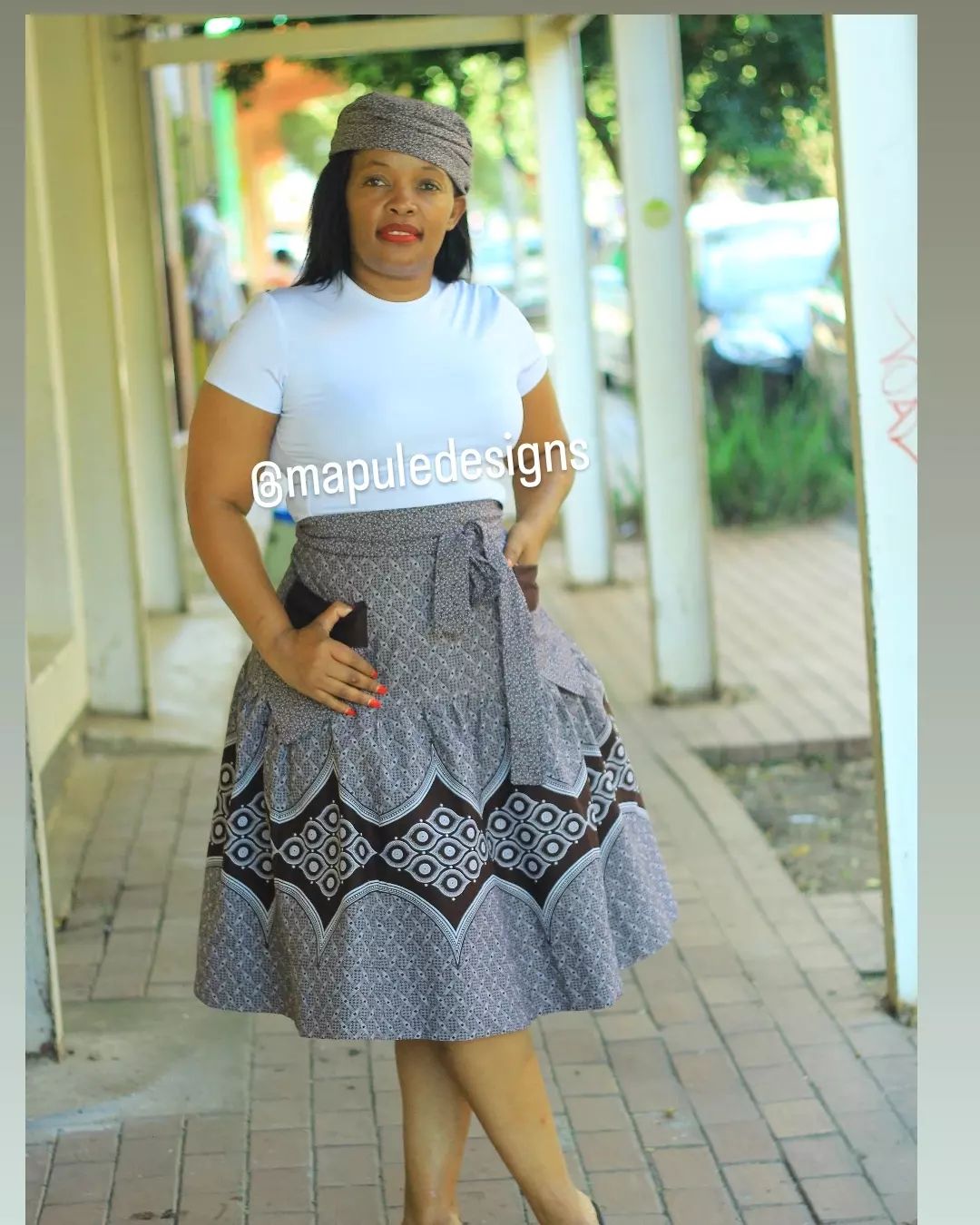
Types of Sotho Traditional Attire
The rich tradition of Sotho traditional attire offers a glimpse into the vibrant culture of the Basotho people. From elaborate ceremonies to everyday wear, the Sotho people have a variety of styles and variations when it comes to their traditional attire.
Different styles and variations of Sotho Traditional Attire
- Seshoeshoe: This is the most recognizable and iconic form of Sotho traditional attire. It is a fabric with intricate patterns and vibrant colors that is often used to create beautiful dresses, skirts, and jackets.
- Mantsa: Mantsa is a traditional blanket that holds great significance in Basotho culture. It is worn by both men and women for warmth and as a symbol of identity. The blanket comes in various colors and designs, with each design representing a specific meaning or clan.
- Lesotho Hat: The Lesotho hat, also known as the mokorotlo, is a distinctively shaped hat made from woven straw or grass. It is worn by both men and women and serves as a symbol of pride and cultural heritage.
- Seana Marena: This is a traditional outfit worn by married women during special occasions or ceremonies. It consists of a skirt adorned with colorful beads, a matching top, and a shawl.
- Chanela: Chanela is a traditional leather apron worn by men during important events or celebrations. It is intricately decorated with beadwork and represents masculinity and strength.
Sotho traditional attire not only reflects the beauty and diversity of the Basotho culture but also serves as a way for individuals to connect with their heritage and express their identity.

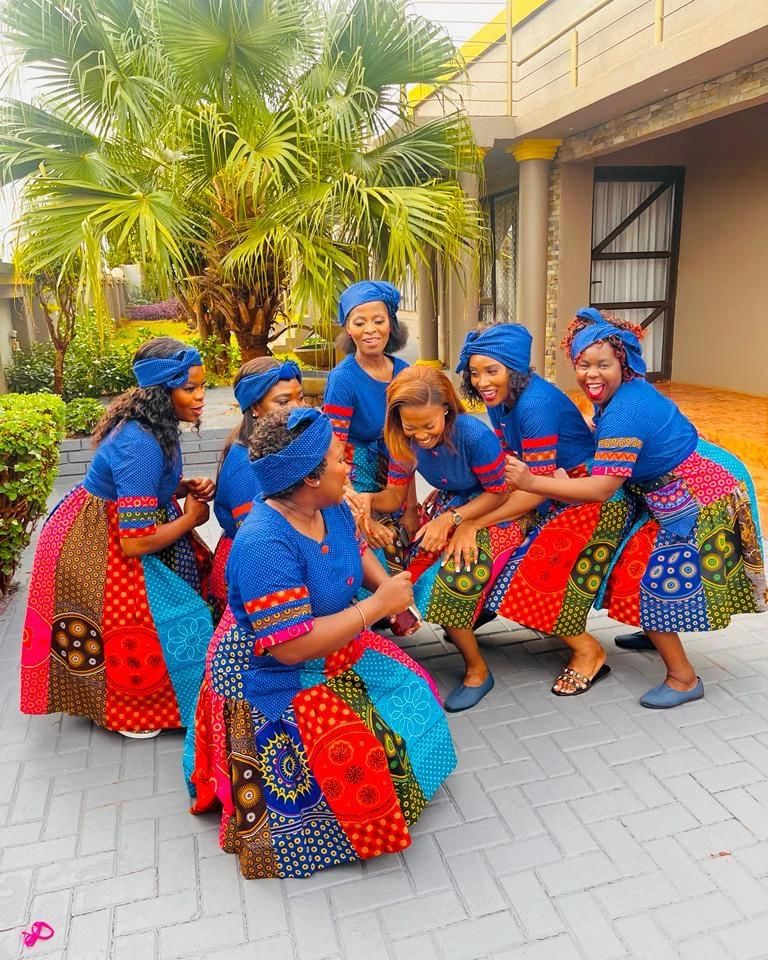
Sotho Traditional Attire for Men
Description and features of traditional attire for men
Sotho traditional attire for men is a beautiful reflection of the rich cultural heritage of the Basotho people. The attire consists of various elements that are distinctly Sotho, showcasing their traditions and values.
The most notable feature of Sotho traditional attire for men is the blanket. Made from warm, thick fabric, the blanket is not only a practical garment but also a symbol of status and identity. The blankets come in a variety of colors and patterns, each with its own meaning and significance within the community.
In addition to the blanket, Sotho men also wear a wide-brimmed hat known as a mokorotlo. The hat is traditionally made from straw or wool and is decorated with intricate designs. It is an essential accessory that adds to the overall look and style of the attire.
To complete their traditional attire, Sotho men often wear trousers called letšeka, which are loose-fitting and comfortable. These trousers are typically made from colorful fabric and are adorned with embroidery or other decorative elements.
Wearing Sotho traditional attire is not only a way to honor their heritage but also a way to celebrate their uniqueness. It serves as a visual representation of their culture and identity, allowing them to proudly showcase their traditions to the world.
Sotho Traditional Attire for Women
Often adorned with vibrant colors and intricate designs, Sotho traditional attire for women is a rich representation of cultural heritage. The clothing typically includes a dress known as “seana marena,” which is made from colorful fabric and accessorized with bold patterns. The attire also features a headwrap, known as “doek,” which adds a touch of elegance to the overall look. This traditional attire showcases the pride and beauty of the Sotho people, and wearing it is a way to celebrate their rich traditions and customs.


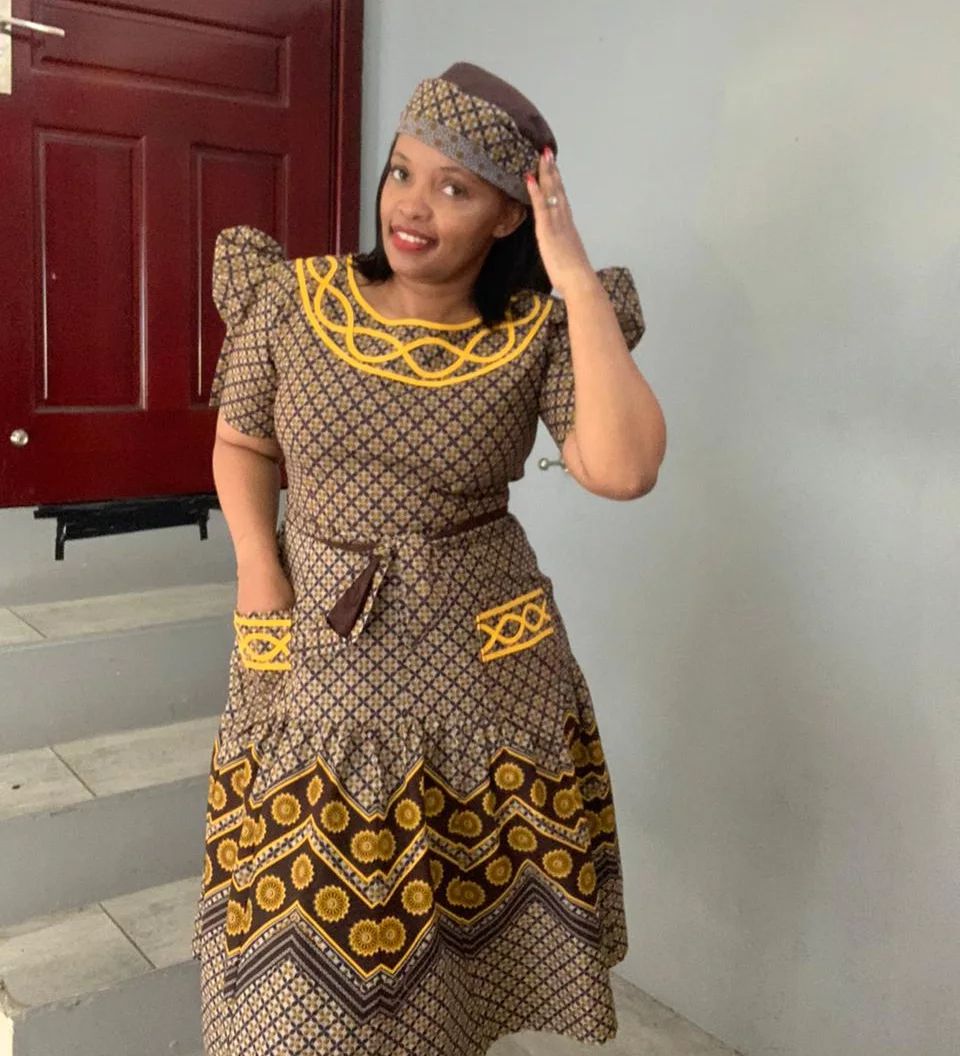
Accessories in Sotho Traditional Attire
The rich tradition of Sotho traditional attire encompasses not only the clothing itself but also the accessories that complete the authentic look. These accessories play a significant role in enhancing the cultural significance and beauty of the attire.
Significance and role of accessories in completing the traditional look
Accessories such as hats, blankets, and beads hold deep cultural and symbolic importance in Sotho traditional attire. The hat, known as the mokorotlo, is a distinct symbol of identity and pride for the Basotho people. It represents one’s status and position within the community.
Blankets, often adorned with intricate geometric patterns, are essential elements of Sotho attire. They not only provide warmth but also convey messages about age, marital status, and social standing. The blankets are intricately tied and draped to create elegant and stylish looks.
Beaded accessories, like necklaces, bracelets, and anklets, add a touch of color and vibrancy to Sotho traditional attire. These beads hold cultural significance as they symbolize unity, tradition, and spirituality. Different colors and patterns carry specific meanings and are carefully chosen to reflect personal or cultural beliefs.
By incorporating these accessories into their traditional attire, the Basotho people showcase their heritage and preserve their cultural identity. The combination of clothing and accessories creates a visually stunning ensemble that celebrates the artistic expression and unique style of the Sotho people.
Sotho traditional attire with its vibrant colors, intricate patterns, and meaningful accessories stands as a testament to the rich culture and traditions of this beautiful African tribe.
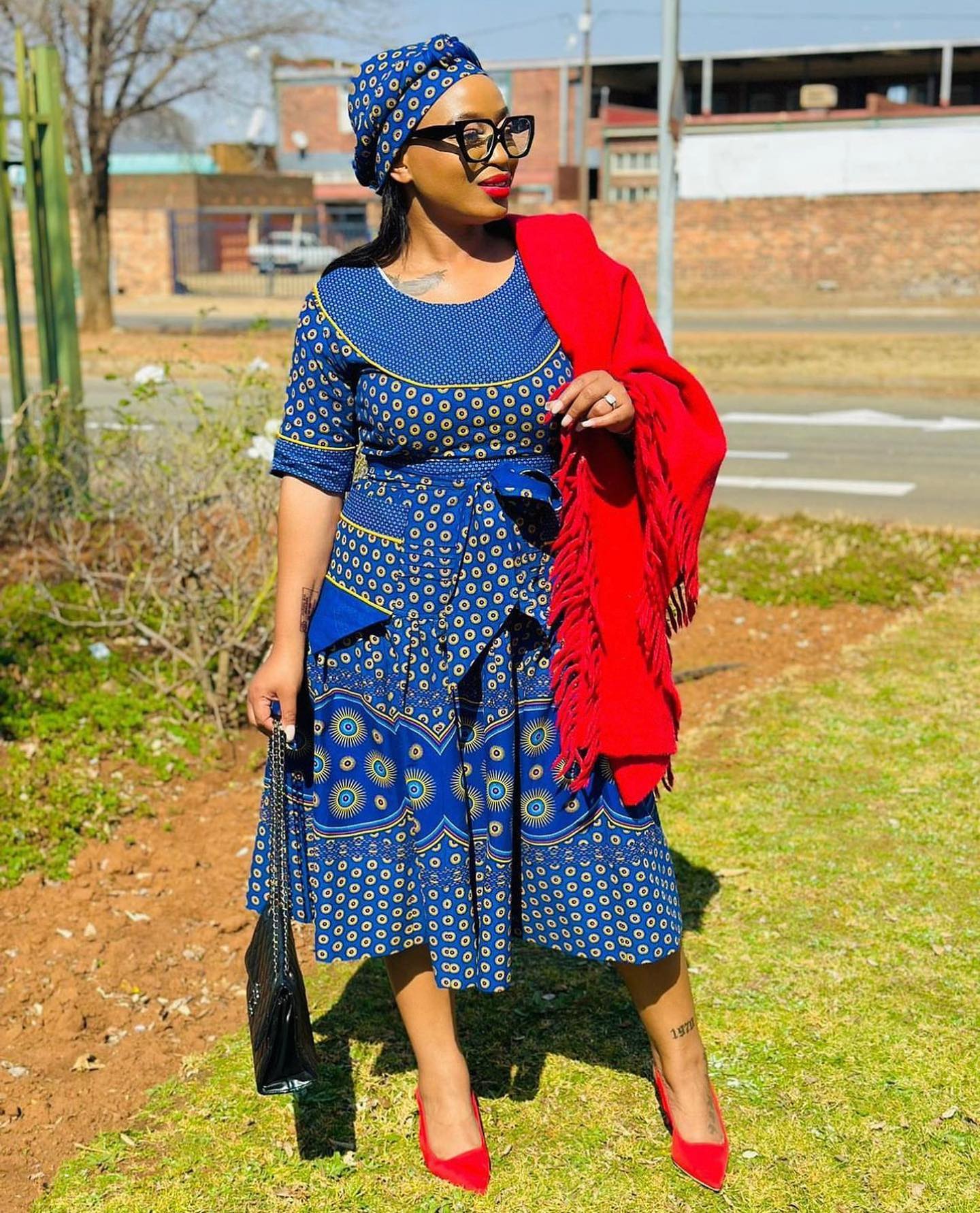

Sotho Traditional Attire for Special Occasions
Sotho traditional attire is a vibrant and rich expression of culture and heritage. It holds deep significance in the Sotho community, particularly during special occasions like weddings, festivals, and celebrations.
Traditional attire for weddings, festivals, and other celebrations
Sotho traditional attire is known for its bold colors, intricate patterns, and exquisite designs. It reflects the cultural values, traditions, and customs of the Sotho people. During weddings, both the bride and groom wear traditional garments that symbolize their union and showcase their heritage. Festivals and other celebrations also provide an opportunity for individuals to proudly don their traditional attire, which represents a sense of unity and pride within the community.
The attire typically includes various components such as blankets, aprons, skirts, dresses, hats, and accessories like beads and jewelry. These elements are carefully chosen to create a visually stunning and meaningful ensemble.
Wearing Sotho traditional attire not only honors the past but also gives individuals a sense of identity and belonging. It allows them to connect with their roots and celebrate their cultural heritage in a modern context.
As Sotho traditional attire continues to evolve with the influence of contemporary fashion trends, it remains an important symbol of pride and tradition. Embracing this rich tradition helps promote cultural diversity and showcases the beauty of Sotho culture to the world.
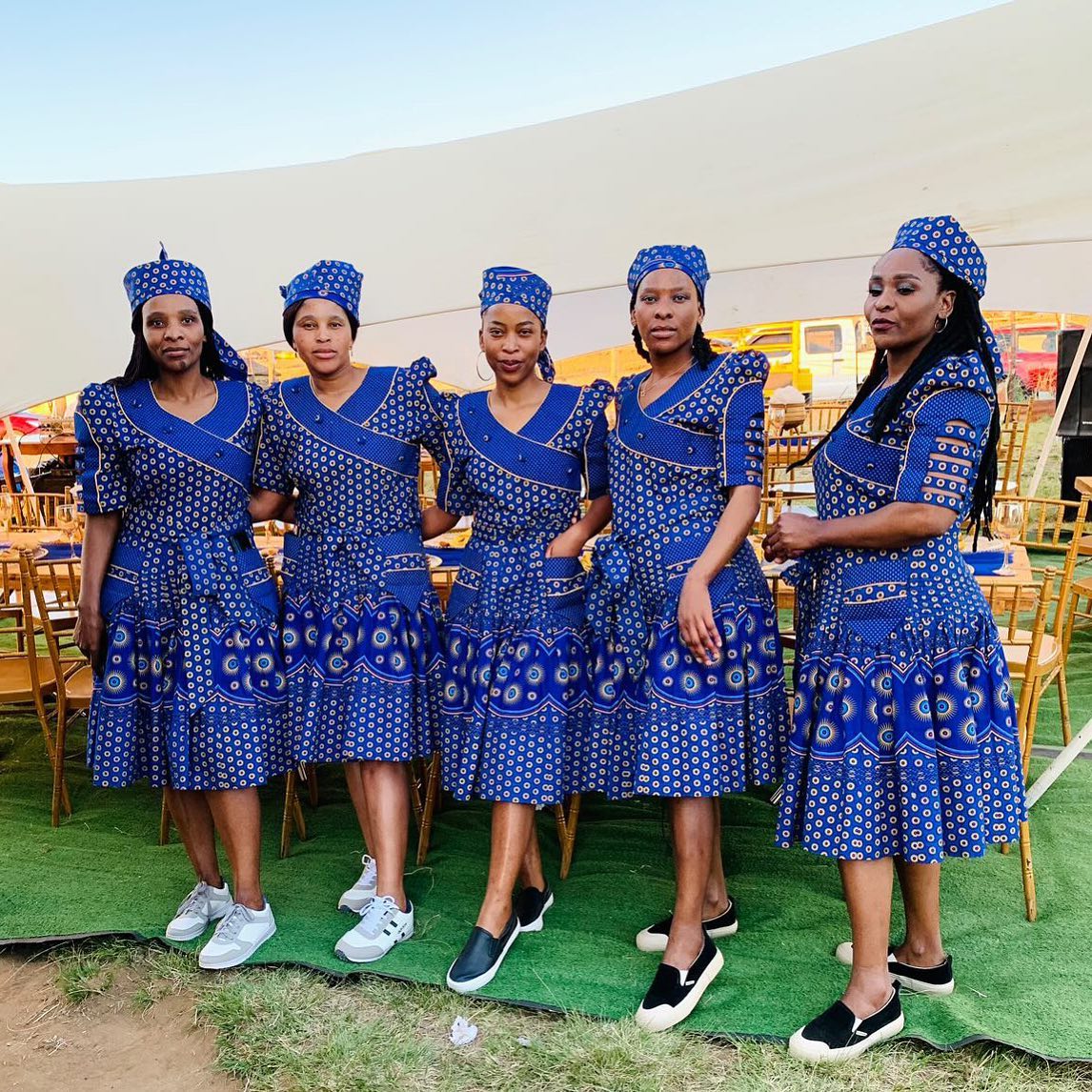
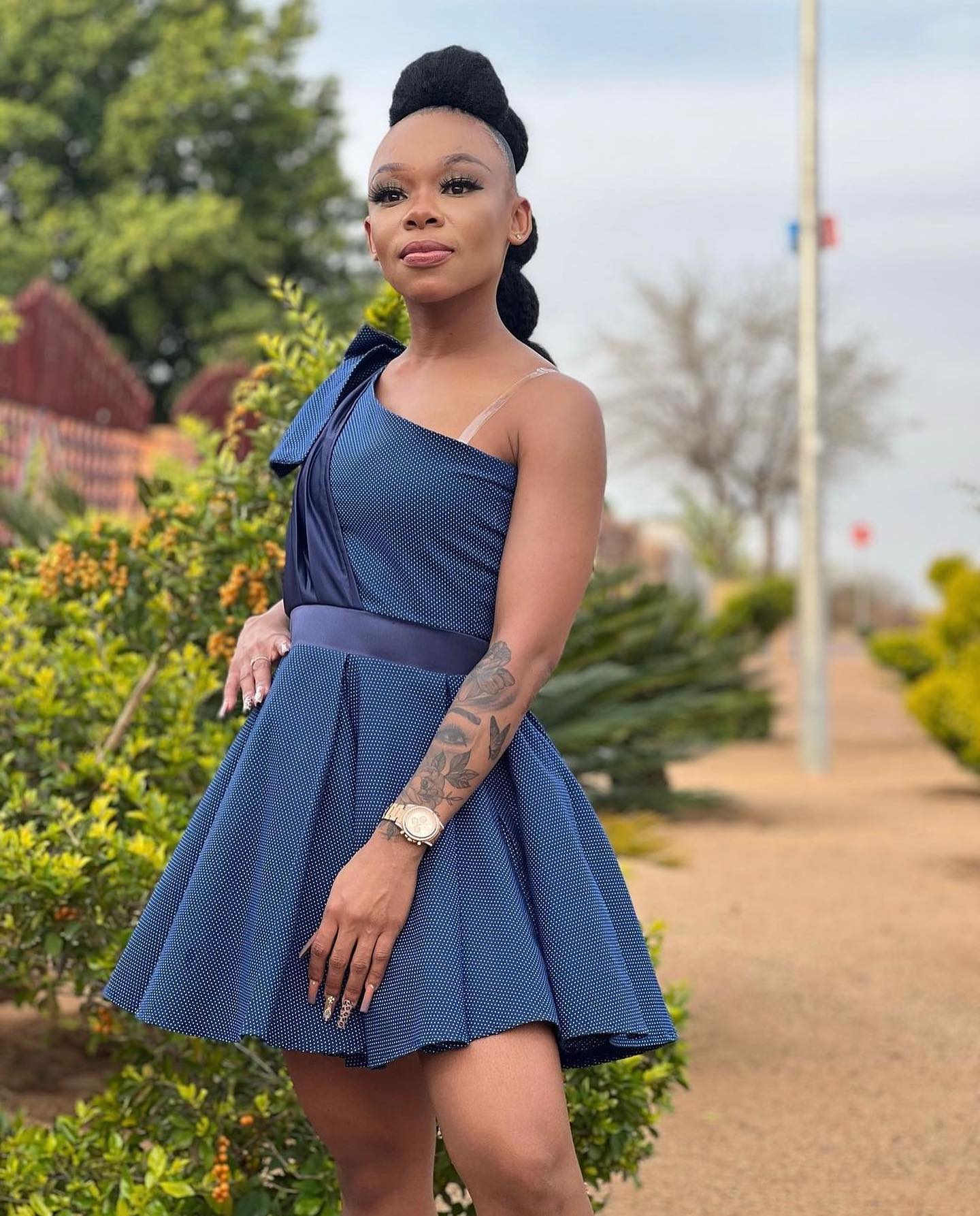
Modern Influences on Sotho Traditional Attire
The Sotho people of Southern Africa have a rich tradition of vibrant and expressive attire that reflects their cultural heritage. Today, this traditional attire is not only confined to special occasions but has also adapted to modern influences.
Contemporary adaptations and fusion with modern fashion trends
The Sotho traditional attire has seen contemporary adaptations and fusion with modern fashion trends. While still retaining its distinct elements such as the blanket, headgear, and colorful patterns, Sotho attire has also incorporated modern fabrics, styles, and accessories.
In recent years, we have seen Sotho attire showcased in fashion shows, worn by celebrities and influencers, and embraced by individuals as a fashionable choice. This fusion of tradition and modernity has not only revitalized the appreciation for Sotho culture but has also made it accessible and appealing to a wider audience.
The incorporation of modern influences into Sotho traditional attire has allowed individuals to express their cultural identity while also staying trendy and fashionable. It is a celebration of heritage combined with a nod to the ever-changing world of fashion.
So whether it’s a beautifully embroidered dress, a stylish suit with traditional motifs, or accessories that add a touch of Sotho flair to an outfit, exploring the rich tradition of Sotho traditional attire offers a unique opportunity to honor the past while embracing the present.
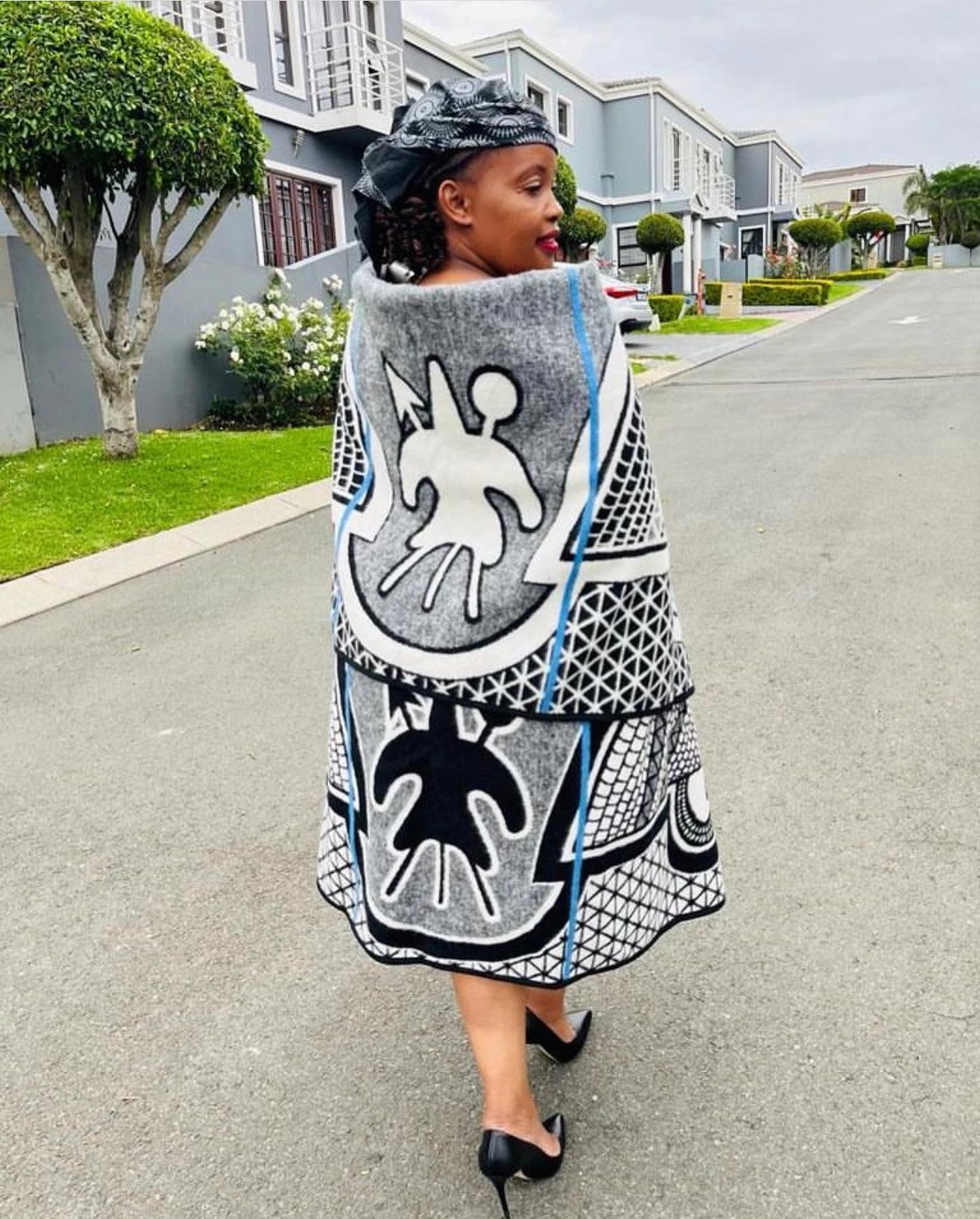

Conclusion
Sotho traditional attire is more than just clothing; it is a representation of the rich heritage and cultural identity of the Sotho people. By exploring and appreciating the beauty of Sotho traditional attire, we contribute to the preservation of this valued tradition for future generations to admire and cherish.
Preservation and appreciation of Sotho Traditional Attire
The Sotho people have a long-standing tradition of wearing vibrant and intricate traditional attire that reflects their cultural identity. This attire includes colorful blankets, headgear, and elaborate beadwork. By preserving and appreciating Sotho traditional attire, we honor the customs and values passed down through generations, keeping them alive for years to come.

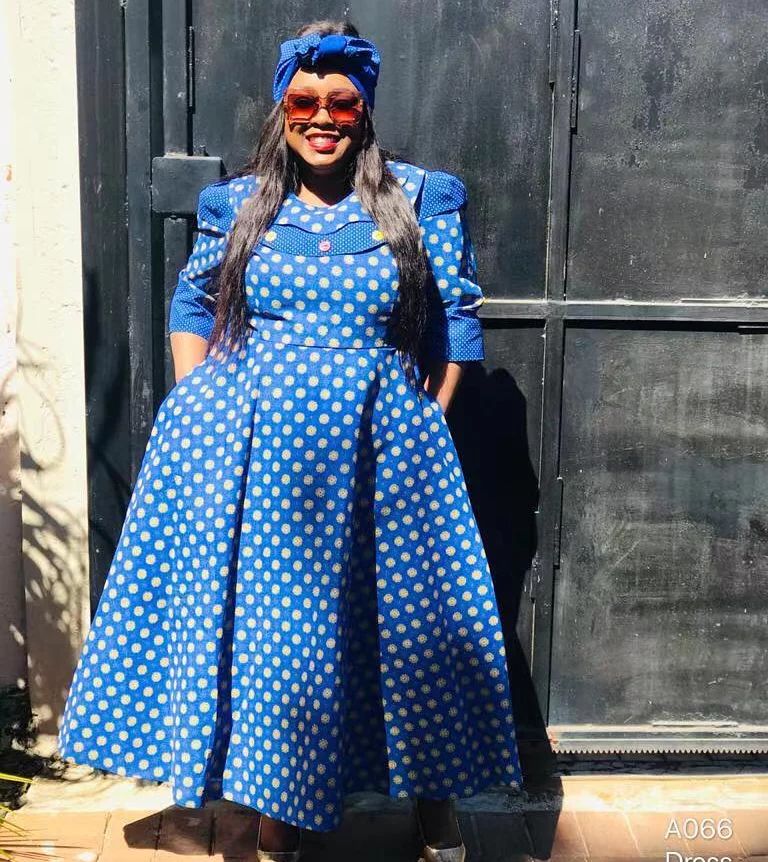
FAQ (Frequently Asked Questions)
Q: What materials are commonly used in Sotho traditional attire?A: Sotho traditional attire often incorporates materials such as wool, cotton, and leather, along with vibrant colors and intricate patterns.
Q: Can anyone wear Sotho traditional attire?
A: Yes, anyone can wear Sotho traditional attire as a way to celebrate the culture and heritage of the Sotho people. It is important to do so respectfully and with an understanding of the significance behind each piece.
Q: Where can I purchase authentic Sotho traditional attire?
A: Authentic Sotho traditional attire can be found in local markets or specialized craft stores in Lesotho or South Africa. Online platforms may also offer a selection of genuine Sotho traditional attire for purchase.
Q: How can I incorporate Sotho traditional attire into my wardrobe?A: You can incorporate elements of Sotho traditional attire into your wardrobe by wearing a colorful blanket as a shawl or incorporating beaded accessories into your outfit. It’s a beautiful way to embrace diversity and show appreciation for different cultures.
Comments are closed.